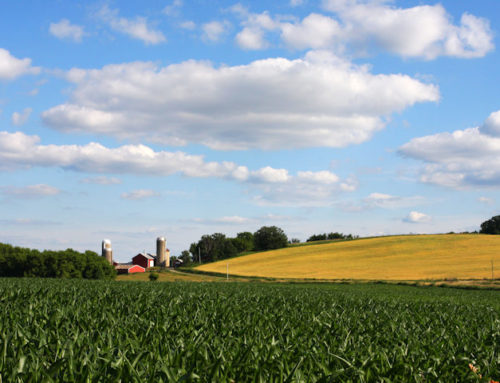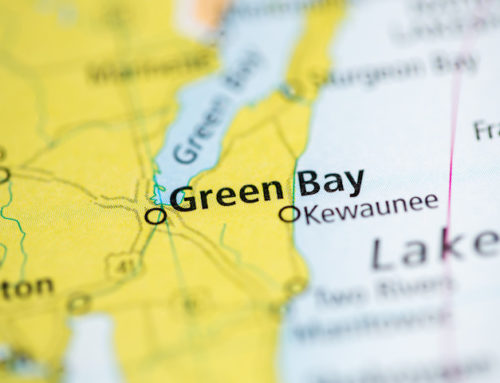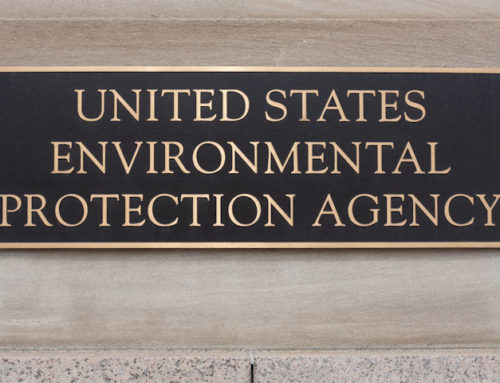Glossary of Landform and Geologic Terms from the Source Title 430 – National Soil Survey Handbook, (430-629-H, 1st Ed., Amend. 25, Nov. 2017). 629-A.66
The following is a select list that may assist with mapping bedrock from the 1161 terms defined in the original government document. At the end of this page additional information is provided about the definitions, purpose, and definitions as well as credits.
active layer
The top layer of ground subject to annual thawing and freezing in areas underlain by permafrost. NRC
agricultural anthroscape
A human-modified “landscape” dominated by permanent, extensive alterations to the physical shape or internal stratigraphy of the land due to agricultural management for food, fiber or forage production, that have substantively altered water flow and sediment transport across and within the regolith (e.g., leveled land). Commonly excludes areas of minor alterations (e.g. shallow plowing) that are easily obscured or obliterated by natural bio-, pedo-, or cryoturbation. Compare – hillslope terrace anthroscape, urban anthroscape, suburban anthroscape. SW
alluvial
Pertaining to material or processes associated with transportation and/or subaerial deposition by concentrated running water. Compare – colluvial. GSST
anticline
(i) [landform] A unit of folded strata that is convex upward and whose core contains the stratigraphically oldest rocks, and occurs at the earth’s surface. In a single anticline, beds forming the opposing limbs of the fold dip away from its axial plane. Compare – monocline, syncline, fold. SW & HP
(ii) [structural geology] A fold, at any depth, generally convex upward whose core contains the stratigraphically older rocks. GG
aquiclude
A layer of soil, sediment, or rock that may or may not be saturated, that is incapable of transmitting significant quantities of water under ordinary hydraulic gradients. Compare – aquitard. FC
aquifer
A saturated, permeable geologic unit of sediment or rock that can transmit significant quantities of water under hydraulic gradients. FC
aquitard
A body of rock or sediment that retards but does not prevent the flow of water to or from an adjacent aquifer. It does not readily yield water to wells or springs but may serve as a storage unit for groundwater. GG
artificial drainage pattern
Human-made networks of drainage structures (ditches, canals, etc.) built primarily to lower or control the local water table in low lying, flat topography such as glacial lakebeds, broad flood plains, low coastal plains, or marshes most commonly in humid climates. Irrigation ditches found in arid and semiarid climates, which bring water into the fields, should not be confused with drainage structures. SW & WA

Glossary of definitions and terms for geology bedrock mapping.
basin
(i) Drainage basin.
(ii) A low area in the earth’s crust, of tectonic origin, in which sediments have accumulated. GG.
(iii) (colloquial: western United States) A general term for the nearly level to gently sloping, bottom surface of an intermontane basin (bolson). Landforms include playas, broad alluvial flats containing ephemeral drainageways, and relict alluvial and lacustrine surfaces that rarely, if ever, are subject to flooding. Where through-drainage systems are well developed, flood plains are dominant and lake plains are absent or of limited extent. Basin floors grade mountainward to distal parts of piedmont slopes. FFP
bed
[stratigraphy] The layer of sediments or sedimentary rocks bounded above and below by more or less well-defined bedding surfaces. The smallest, formal lithostratigraphic unit of sedimentary rocks. The designation of a bed or a unit of beds as a formally named lithostratigraphic unit generally should be limited to certain distinctive beds whose recognition is particularly useful. Coal beds, oil sands, and other layers of economic importance commonly are named, but such units and their names usually are not a part of formal stratigraphic nomenclature. Compare – formation. GGbedded
Formed, arranged, or deposited in layers or beds, or made up of or occurring in the form of beds; especially said of a layered sedimentary rock, deposit, or formation. GG
bedding plane
A planar or nearly planar bedding surface that visibly separates each successive layer of stratified sediment or rock (of the same or different lithology) from the preceding or following layer; a plane of deposition. It often marks a change in the circumstances of deposition, and may show a parting, a color difference, a change in particle size, or various combinations. A term commonly applied to any bedding surface even when conspicuously bent or deformed by folding. SW and GG
bedrock
A general term for the solid rock that underlies the soil and other unconsolidated material or that is exposed at the surface. Compare – regolith, residuum. GG
borrow pit
An excavated area from which earthy material has been removed typically for construction purposes offsite; also called barrow pit. GG
channel
(i) [streams] The hollow bed where a natural body of surface water flows or may flow. The deepest or central part of the bed of a stream, containing the main current and occupied more or less continuously by water.
(ii) (ii) (colloquial: western United States) The bed of a single or braided watercourse that commonly is barren of vegetation and is formed of modern alluvium. Channels may be enclosed by banks or splayed across and slightly mounded above a fan surface and include bars and mounds of cobbles and stones.
(iii) (iii) [microfeature term] Small, trough-like, arcuate or sinuous channels separated by small bars or ridges, caused by fluvial processes; common to flood plains and young alluvial terraces; a constituent part of bar and channel topography. GG, FFP, and SW
collapse sinkhole
A type of sinkhole that is formed by collapse of a cave within the underlying soluble bedrock (e.g., limestone, gypsum, salt). Compare – solution sinkhole. SW, WW, and GG
conglomerate
A coarse-grained, clastic sedimentary rock composed of rounded to subangular rock fragments larger than 2 mm, commonly with a matrix of sand and finer material; cements include silica, calcium carbonate, and iron oxides. The consolidated equivalent of gravel. Compare – breccia. HP
creek
[streams] (not preferred: refer to intermittent stream) A general term used throughout the United States (except New England), Canada, and Australia for a small, intermittent stream that is larger than a brook but smaller than a river. GGcut
A passage, incision, or space from which material has been excavated, such as a road cut or a railroad cut. GG
debris
Any surficial accumulation of loose material detached from rock masses by chemical and mechanical means, as by decay and disintegration. It consists of rock clastic material of any size and sometimes organic matter. GG
degradation
[geomorphology] The wearing down or away, and the general lowering of the land surface by natural processes of weathering and erosion (e.g., the deepening by a stream of its channel); it may infer the process of transportation of sediment. Compare – destructional. GGdeposit
Either consolidated or unconsolidated material of any type that has accumulated by natural processes or by human activity. SW
deposition
The laying down of any material by any agent such as wind, water, ice or by other natural processes. HP
depression
Any relatively sunken part of the earth’s surface; especially a low-lying area surrounded by higher ground. A closed depression has no natural outlet for surface drainage (e.g., a sinkhole). An open depression has a natural outlet for surface drainage. Compare – closed depression, open depression. GG
dip
[structural geology] The maximum angle that a structural surface, (e.g., a bedding or fault plane) makes with the horizontal, measured perpendicular to the strike of the structure and in the vertical plane; used in combination with “dip” to describe the orientation of bedrock strata. SW and GGdip slope
A slope of the land surface, roughly determined by and approximately conforming to the dip of underlying bedded rocks; (i.e., the long, gently inclined surface of a cuesta). Compare – scarp slope. HP
discontinuity
[stratigraphy] Any interruption in sedimentation, whatever its cause or length, usually a manifestation of nondeposition and accompanying erosion; an unconformity. GGditch
An open and usually unpaved (unlined), channel or trench excavated to convey water for drainage (removal) or irrigation (addition) to or from a landscape; smaller than a canal; some ditches are modified natural waterways. GG
dolomite
(i) [mineral] A common rock-forming rhombohedral carbonate mineral: CaMg(CO3)2. GG
(ii) [rock] A carbonate sedimentary rock consisting chiefly (more than 50 percent by weight or by areal percentages under the microscope) of the mineral dolomite. GG
dolostone
(not recommended – use dolomite) An obsolete term proposed for the sedimentary rock called dolomite, in order to avoid confusion with the mineral of the same name. Compare – dolomite. GG
drainage basin
A general term for a region or area bounded by a drainage divide and occupied by a drainage system. GG
drainage pattern
The configuration or arrangement, in plan view, of stream courses in an area, including gullies or first-order channelized flow areas, higher order tributaries, and main streams. Drainage pattern is related to local geologic materials and structure, geomorphologic features, and geomorphic history of an area. Major drainage pattern types include dendritic, trellis, artificial, etc. Also called drainage network. SW, GG, and WA
drift
[glacial geology] A general term applied to all mineral material (clay, silt, sand, gravel, boulders) transported by a glacier and deposited directly by or from the ice, or by running water emanating from a glacier. Drift includes unstratified material (till) that forms moraines, and stratified deposits that form outwash plains, eskers, kames, varves, and glaciofluvial sediments. The term is generally applied to Pleistocene glacial deposits in areas that no longer contain glaciers. GGdump
An area of smooth or uneven accumulations or piles of waste rock, earthy material, or general refuse that without major reclamation are incapable of supporting plants. Compare – fill, sanitary landfill. GSST
elevation
[survey] The height of a point on the earth’s surface relative to mean sea level (msl). Compare – relief. SWerosion
The wearing away of the land surface by running water, waves, or moving ice and wind, or by such processes as mass wasting and corrosion (solution and other chemical processes). The term “geologic erosion” refers to natural erosion processes occurring over long (geologic) time spans. “Accelerated erosion” generically refers to erosion in excess of what is presumed or estimated to be naturally occurring levels, and which is a direct result of human activities (e.g., cultivation, logging, etc.). SW and HP
erosional
[geomorphology] (adjective) Owing its origin, form, position or general character to degradational processes by water, wind, ice or gravity. Compare – constructional. HPerosion surface
A land surface shaped by the action of erosion, especially by running water. GG
facies
[stratigraphy] A distinctive group of characteristics that distinguish one group from another within a stratigraphic unit; the sum of all primary lithologic and paleontological characteristics of sediments or sedimentary rock that are used to infer its origin and environment; the general nature of appearance of sediments or sedimentary rock produced under a given set of conditions; e.g., contrasting river-channel facies and overbank-flood plain facies in alluvial valley fills. HPfault line
The trace of a fault plane on the ground surface or on a reference plane. Compare – fault zone, fault-line scarp. GG
fault zone
A fault that is expressed as a zone of numerous small fractures or of breccia or fault gouge. A fault zone may be as wide as hundreds of meters. Compare – fault, fault-line scarp. GG
fill
[engineering geology](i) Human-constructed deposits of natural earth materials (e.g., soil, gravel, rock) and waste materials (e.g., tailings or spoil from dredging) Used to fill a depression, to extend shore land into a body of water, or in building dams.
(ii) Soil or loose rock used to raise the surface level of low-lying land, such as an embankment to fill a hollow or ravine in roads construction. GG
flood plain
The nearly level plain that borders a stream and is subject to inundation under flood-stage conditions unless protected artificially. It is usually a constructional landform built of sediment deposited during overflow and lateral migration of the streams. HP
formation
[stratigraphy] The basic lithostratigraphic unit in the local classification of rocks. A body of rock (commonly a sedimentary stratum or strata, but also igneous and metamorphic rocks) generally characterized by some degree of internal lithologic homogeneity or distinctive lithologic features (such as chemical composition, structures, textures, or general kind of fossils), by a prevailing (but not necessarily tabular) shape, and is mappable at the earth’s surface (at scales of the order of 1:25,000) or traceable in the subsurface. Formation may be combined into Groups or subdivided into members. Compare – bed. HPglacial
(adjective)
(i) Of or relating to the presence and activities of ice and glaciers, as in glacial erosion.
(ii) Pertaining to distinctive features and materials produced by or derived from glaciers and ice sheets, as in glacial lakes
(iii)Pertaining to an ice age or region of glaciation. GG
glacial groove
A deep, wide, usually straight furrow cut in bedrock by the abrasive action of a rock fragment embedded in the bottom of a moving glacier; it is larger and deeper than a glacial striation, ranging in size from a deep scratch to a small glacial valley. Compare – flute. GG
glacial outwash
(not recommended) Use outwash
glacial till
(not recommended: use till). Till should only be used for describing glacial sediments, therefore “glacial till” is redundant. GM
glacier
(i) A large mass of ice formed, at least in part, on land by the compaction and recrystallization of snow, moving slowly by creep downslope or outward in all directions due to the stress of its own weight, and surviving from year to year. Included are small mountain glaciers as well as ice sheets continental in size, and ice shelves that float on the ocean but are fed in part by ice formed on land.
(ii) A stream-like landform having the appearance of, or moving like a glacier (e.g., a rock glacier). Compare – snowfield, rock glacier. GG
gravel pit
A depression, ditch or pit excavated to furnish gravel for roads or other construction purposes; a type of borrow pit. SW
ground soil
A generic name for any soil at the present-day land surface and actively undergoing pedogenesis, regardless of its history (i.e., relict, exhumed). Compare – buried soil. SW and RR
hill
A generic term for an elevated area of the land surface, rising at least 30 m (100 ft.) to as much as 300 meters (approx. 1000 ft.) above surrounding lowlands, usually with a nominal summit area relative to bounding slopes, a well-defined, rounded outline and slopes that generally exceed 15 percent. A hill can occur as a single, isolated mass or in a group. A hill can be further specified based on the magnitude of local relief: low hill (30 – 90 m) or high hill (90-300 m). Informal distinctions between a hill and a mountain are often arbitrary and dependent on local convention. Compare – hillock, plateau, mountain, foothills, hills. SW and HP
human-transported material
Organic or mineral soil material (or any other material that can function as a soil material) that has been moved horizontally onto a pedon from a source area outside of that pedon by directed human activity, usually with the aid of machinery. There has been little or no subsequent reworking by wind, gravity, water, or ice. Human-transported materials are most commonly associated with building sites, mining or dredging operations, sanitary landfills, or other similar activities that result in the formation of a constructional anthropogenic landform. ICOMANTH
igneous rock
Rock formed by cooling and solidification from magma, and that has not been changed appreciably by weathering since its formation; major varieties include plutonic (i.e., intrusive) and volcanic (i.e., extrusive) rocks. Examples: andesite, basalt, granite. Compare – intrusive, extrusive, metamorphic rock. GSST and HP
interbedded
Said of beds lying between or alternating with others of different character; especially said of rock material or sediments laid down in sequence between other beds, such as “interbedded” sands and gravels. GG
joint
[geology] A surface of actual or potential fracture or parting in a rock, without displacement; the surface is usually planar and often occurs with parallel joints to form part of a joint set. HPkarst
A kind of topography formed in limestone, gypsum, or other soluble rocks by dissolution, and that is characterized by closed depressions, sinkholes, caves, and underground drainage. Various types of karst can be recognized depending upon the dominant surface features: karst dominated by closed depressions (sinkhole karst – temperate climates; cockpit karst – humid tropical climates), closed depressions and large rivers (fluviokarst), bare rock dominated by dissolution joints (pavement karst), tropical cone-, tower- or domed-hills (kegel karst), or karst thinly mantled with glacial drift (glaciokarst), etc. SW and WW
karst drainage pattern
A drainage pattern that lacks an integrated drainage system associated with soluble rocks with little or no surface drainage but a considerable underground, internal drainage system; characteristic of karst landscapes underlain by limestone, gypsum, or salt. SW
karstic
(adjective) Having the attributes of karst. SW and GG
karst valley
A closed depression formed by the coalescence of multiple sinkholes; an elongate, solutional valley. Its drainage is subsurface, diameters range from several hundred meters to a few kilometers, and it usually has a scalloped margin inherited from the sinkholes. It may have nominal, local channel flow (small streams), sequential sinkhole inlets (springs) and outlets (swallow hole, etc.); also called compound sinkhole (not preferred), uvala (not preferred). Compare – sinkhole, interior valley. SW and GG
kettle
A steep-sided, bowl-shaped depression commonly without surface drainage (closed depression) in drift deposits, often containing a lake or swamp, and formed by the melting of a large, detached block of stagnant ice that had been wholly or partly buried in the drift. Kettles range in depth from 1 to tens of meters, and with diameters up to 13 km. Compare – pothole. GG
lake
[water] An inland body of permanently standing water fresh or saline, occupying a depression on the earth’s surface, generally of appreciable size (larger than a pond) and too deep to permit vegetation (excluding subaqueous vegetation) to take root completely across the expanse of water. GGlandfill
(see sanitary landfill). Compare – dump.
ledge
(i) A narrow shelf or projection of rock, much longer than wide, formed on a rock wall or cliff face, as along a coast by differential wave action on softer rocks; erosion is by combined biological and chemical weathering.
(ii) A rocky outcrop; solid rock.
(iv) A shelf-like quarry exposure or natural rock outcrop. Compare – structural bench. GG
limestone
A sedimentary rock consisting chiefly (more than 50 percent) of calcium carbonate, primarily in the form of calcite. Limestones are usually formed by a combination of organic and inorganic processes and include chemical and clastic (soluble and insoluble) constituents; many contain fossils. HP
lithologic
(adjective) Pertaining to the physical character of a rock. HP
local relief
(i) An informal term referring to the prevailing difference in elevation between drainageways or local depressions and adjacent elevated landforms (on a local scale). Compare – relief, microrelief. SW
(ii) A generic term referring to the collective, relative differences in elevation of a land surface on a broad scale. SSM
lowland
(i) An informal, generic, imprecise term for low-lying land or an extensive region of low-lying land, especially near a coast and including the extended plains or country lying not far above tide level.
(ii) (not preferred) A generic, imprecise term for a landscape of low, comparatively level ground of a region or local area, in contrast with the adjacent higher country.
(iii) (not recommended: use valley, bolson, etc.) A generic term for a large valley. Compare – upland. SW
marsh
Periodically wet or continually flooded areas with the surface not deeply submerged. Covered dominantly with sedges, cattails, rushes, or other hydrophytic plants. Compare – salt marsh, swamp, bog, fen. GSST
metamorphic rock
Rock of any origin altered in mineralogical composition, chemical composition, or structure by heat, pressure, and movement at depth in the earth’s crust.
morain
[glacial geology](i) [material] A mound, ridge, or other topographically distinct accumulation of unsorted, unstratified glacial drift, predominantly till, deposited primarily by the direct action of glacier ice, in a variety of landforms.
(ii) [landform] A general term for a landform composed mainly of till that has been deposited by a glacier; a kame moraine is a type of moraine similar in exterior form to other types of moraines but composed mainly of stratified outwash materials. Types of moraine include disintegration, end, ground, kame, lateral, recessional, and terminal. SW
mound
(i) A low, rounded natural hill of unspecified origin, generally < 3 m high and, composed of earthy material.
(ii) A small, human-made hill, composed either of debris accumulated during successive occupations of the site (e.g., tell) or of earth heaped up to mark a burial site (e.g., burial mound).
(iii) A structure built by colonial organisms (e.g., termite mound). GG
openpit mine
A relatively large depression resulting from the excavation of material and redistribution of overburden associated with surficial mining operations. Compare – quarry, surface mine. SW and GG
outcrop
(i) That part of a geologic formation or structure that appears at the surface of the earth.
(ii) [soil survey] An actual exposure of bedrock at or above the ground surface; the miscellaneous area rock outcrop. Compare – cliff, slickrock. SW and GG
outwash
[glacial geology] Stratified and sorted sediments (chiefly sand and gravel) removed or “washed out” from a glacier by melt-water streams and deposited in front of or beyond the end moraine or the margin of a glacier. The coarser material is deposited nearer to the ice. Compare – pitted outwash, drift, esker, kame, till. SW and GGoverburden
(i) The upper part of a sedimentary deposit, compressing and consolidating the materials below.
(ii) The loose soil or other unconsolidated material overlying bedrock, either transported or formed in place (synonym for regolith). GG
Paleocene
The earliest epoch (from 56.5 to 65.0 million years ago) of the Tertiary Period of geologic time that follows the Cretaceous Period and precedes the Eocene Epoch; also the corresponding (time-stratigraphic) “series” of earthy materials. SW
pond
(i) A natural body of standing fresh water occupying a small surface depression, usually smaller than a lake and larger than a pool.
(ii) A small artificial body of water, used as a source of water. Compare – salt pond. GG
pothole
[geomorphology] (not preferred) A generic, imprecise term for any pot-shaped pit or hole. GGpothole
[glacial geology] A type of small pit or closed depression (1 to 15 meters deep), generally circular or elliptical, occurring in an outwash plain, a recessional moraine, or a till plain. GGquarry
Excavation areas, open to the sky, usually for the extraction of stone. GG
ravine
A small stream channel; narrow, steep-sided, commonly V-shaped in cross section and larger than a gully, cut in unconsolidated materials. General synonym (not preferred) – gulch. Compare – arroyo, draw, gully. HP
reclaimed land
(i) A land area composed of earthy fill material that has been placed and shaped to approximate natural contours, commonly part of land-reclamation efforts after mining operations.
(ii) A land area, commonly submerged in its native state, that has been protected by artificial structures (e.g., dikes) and drained for agricultural or other purposes (e.g., polder). SW
regolith
All unconsolidated earth materials above the solid bedrock. It includes material weathered in place from all kinds of bedrock and alluvial, glacial, eolian, lacustrine, and pyroclastic deposits. Soil scientists regard as soil only that part of the regolith that is modified by organisms and soil-forming processes. Most engineers describe the whole regolith, even to a great depth, as “soil.” Compare – residuum, bedrock. HP
relief
The relative difference in elevation between the upland summits and the lowlands or valleys of a given region. Compare – local relief. GG
residuum
(residual soil material) Unconsolidated, weathered, or partly weathered mineral material that accumulates by disintegration of bedrock in place. Compare – colluvium, regolith, saprolite. HP
rise
[soil survey] A general term for a slight increase in slope (e.g., ≤ 3%) and elevation of the land surface, usually with a broad, low summit and gently sloping sides. The term is restricted to landforms and microfeatures in areas of very low relief such as lake plains or coastal plains. SW and GGriver
[streams](i) A general term for a natural, freshwater surface stream of considerable volume and generally with a permanent base flow, moving in a defined channel toward a larger river, lake, or sea.
(ii) (not recommended: colloquial – New England, United States) A small watercourse that elsewhere in the United States is known as a creek. Compare – stream. GG
road bed
The trace or track of a wheeled vehicle route that may or may not be raised slightly above the adjacent land, and composed of earthy fill material (gravel, rock fragments, etc.) or local soil material. Traffic can alter various soil properties primarily by compaction. Abandoned or reclaimed beds may no longer be topographically or visually distinct. However, materials used to construct beds or changes in soil properties may continue to have a significant impact on soil management or plant growth. SW
road cut
A common anthropogenic feature, typically a microfeature, consisting of the sloping, cut surface flanking a road bed on one or both sides, that remains after local topography is minimized by cutting an elongated depression through higher ground during road construction; a type of cutbank. Compare – cut, cutbank. SW
rubble
An accumulation of loose angular rock fragments, commonly overlying outcropping rock; the unconsolidated equivalent of a breccia. Compare – scree, talus. GG
sand pit
A depression, ditch or pit excavated to furnish sand for roads or other construction purposes offsite; a type of borrow pit. SW
sandstone
Sedimentary rock containing dominantly sand-size clastic particles. HP
sanitary landfill
A land area where municipal solid waste is buried in a manner engineered to minimize environmental degradation. Commonly the waste is compacted and ultimately covered with soil or other earthy material. Compare – dump. GG
sediment
Material, both mineral and organic, that is in suspension, is being transported, or has been moved from its site of origin by water, wind, ice or mass-wasting and has come to rest on the earth’s surface either above or below sea level. Sediment in a broad sense also includes materials precipitated from solution or emplaced by explosive volcanism, as well as organic remains (e.g., peat that has not been subject to appreciable transport). HP
sedimentary rock
A consolidated deposit of clastic particles, chemical precipitates, or organic remains accumulated at or near the surface of the earth under “normal” low temperature and pressure conditions. Sedimentary rocks include consolidated equivalents of alluvium, colluvium, drift, and eolian, lacustrine, marine deposits (e.g., sandstone, siltstone, mudstone, claystone, shale, conglomerate, limestone, dolomite, and coal). Compare – sediment. HP
shale
Sedimentary rock formed by induration of a clay, silty clay, or silty clay loam deposit and having the tendency to split into thin layers (i.e., fissility). HP
sinkhole
A closed, circular or elliptical depression, commonly funnel-shaped, characterized by subsurface drainage and formed either by dissolution of the surface of underlying bedrock (e.g., limestone, gypsum, salt) (solution sinkhole) or by collapse of underlying caves within bedrock (collapse sinkhole); diameters range from a few meters to as much as 1000 m. Complexes of sinkholes in carbonate-rock terrain are the main components of karst topography. Synonym (not preferred) – doline. Compare – karst valley, interior valley, cockpit. SW and WW
sinkhole karst
A landscape dominated by subsurface drainage and sinkholes (dolines) that range widely in sizes and density; the most common type of karst in upland areas of temperate regions (e.g., Highland Rim of Tennessee, northern Florida, southwestern Missouri, etc.); also called doline karst (not preferred). Compare – fluviokarst, pavement karst, glaciokarst, karst. SW, WW, and GG
slope
(also called slope gradient or gradient) The inclination of the land surface from the horizontal. Percent slope is the vertical distance divided by the horizontal distance, then multiplied by 100. SW
specific gravity
The ratio of a material’s density to that of water (material weight in air (weight in air – weight in water)). Used to differentiate different kinds of volcaniclastics and other materials. SW
spoil bank
A bank, mound, or other artificial accumulation of rock debris and earthy dump deposits removed from ditches, strip mines, or other excavations. Compare – dredge spoil bank. SW
spoil pile
(i) A bank, mound, or other artificial accumulation composed of spoil (e.g., an embankment of earthy material removed from a ditch and deposited alongside it). Compare – dredge spoil bank.
(ii) A pile of refuse material from an excavation or mining operation (e.g., a pile of dirt removed from, and stacked at the surface of a mine in a conical heap or in layers). SW and GG
stratified
(adjective) Formed, arranged, or laid down in layers. The term refers to geologic deposits. Layers in soils that result from the processes of soil formation are called horizons; those inherited from the parent material are called strata. HP
stratigraphy
The branch of geology that deals with the definition and interpretation of layered earth materials; the conditions of their formation; their character, arrangement, sequence, age, and distribution; and especially their correlation by the use of fossils and other means. The term is applied both to the sum of the characteristics listed and a study of these characteristics. HP
stream
(i) Any body of running water that moves under gravity to progressively lower levels, in a relatively narrow but clearly defined channel on the ground surface, in a subterranean cavern, or beneath or in a glacier. It is a mixture of water and dissolved, suspended, or entrained matter.
(ii) A term used in quantitative geomorphology interchangeably with channel. Compare – river. GG
strike
[structural geology] The compass direction or trend taken by a structural surface (e.g., a bed or fault plane) as it intersects the horizontal; used in combination with “dip” to describe the orientation of bedrock strata. SW and GGstructural bench
A shelf or step-like landform produced or controlled by erosion resistant, horizontally-bedded rock. Erosion removes overlying weaker rock or sediment forming a nearly level to gently inclined surface that rests on a relatively resistant strata or rock that ascends to a higher slope or platform. Structural benches may occur as a single feature or as a series of stepped-surfaces where alternating weak and resistant strata exist. Due to erosion resistance, structural benches may have little or no geomorphic implication regarding fluvial deposition, past erosion cycles or former stream, basin, or base levels. Compare – mesa, pediment, ledge; see scarp. SW
subsoil
Pedogenically altered, subsurface soil horizons below a topsoil. Frequently characterized by developed soil structural units, deposition of illuvial clays and oxides, and precipitation of soluble soil constituents (carbonates, gypsum). (Generally B horizons, but may include subsurface organic horizons, and also includes pedogenically cemented layers such as Bkkm, Bqm, Bsm, Byym, Bzm) (also topsoil, substratum)
surface mine
A depression, open to the sky, resulting from the surface extraction of earthy material (e.g., soil and fill) or bedrock material (e.g., coal). Compare – borrow pit, openpit mine, quarry. SW
syncline
(i) [landform] A unit of folded strata that is concave upward whose core contains the stratigraphically younger rocks, and occurs at the earth’s surface. In a single syncline, beds forming the opposing limbs of the fold dip toward its axial plane. Compare – monocline, syncline, fold. SW and HP
(ii) [structural geology] A fold, at any depth, generally concave upward whose core contains the stratigraphically younger rocks. GG
till
[glacial] Dominantly unsorted and unstratified drift, generally unconsolidated and deposited directly by a glacier without subsequent reworking by meltwater, and consisting of a heterogeneous mixture of clay, silt, sand, gravel, stones, and boulders; rock fragments of various lithologies are imbedded within a finer matrix that can range from clay to sandy loam. Compare – supraglacial till, subglacial till, flow till, lodgment till, melt-out till, drift, moraine. SW and GGtoeslope
The hillslope position that forms the gently inclined surface at the base of a hillslope. Toeslopes in profile are commonly gentle and linear, and are constructional surfaces forming the lower part of a hill-slope continuum that grades to valley or closed-depression floors. Compare – summit, shoulder, backslope, footslope, valley floor. HP
topography
The relative position and elevations of the natural or manmade features of an area that describe the configuration of its surface. HP
topsoil
The upper most, generally darker, soil layer or horizon at the earth’s surface consisting of unconsolidated sand, silt, clay, rock fragments, and organic matter. It is the zone exhibiting maximum accumulation of organic matter (humification), dissolution and leaching of soluble salts, and eluviation of soil clays. (Generally O, A, and E master horizons, but may include V horizons) (also subsoil, substratum)
trough
[geomorphology](i) Any long, narrow depression in the earth’s surface, such as one between hills or with no surface outlet for drainage.
(ii) (not preferred – see U-shaped valley, mountain valley) A broad, elongate U-shaped valley, such as a glacial trough. Compare – U-shaped valley. GG
unconformity
A substantial break or gap in the geologic record where a unit is overlain by another that is not in stratigraphic succession. Compare – conformity, discontinuity. GG
valley
An elongated, relatively large, externally drained depression of the earth’s surface that is primarily developed by stream erosion or glacial activity. Compare – basin. HP
water
[soil survey] A generic map unit for any permanent, open body of water (pond, lake, reservoir, etc.) that does not support rooted plants. SWweathering
All physical disintegration, chemical decomposition, and biologically induced changes in rocks or other deposits at or near the earth’s surface by atmospheric or biologic agents or circulating surface waters with essentially no transport of the altered material. These changes result in disintegration and decomposition of the material. Compare – regolith, residuum, saprolite. HP
629.0 Definition and Purpose
This glossary provides the NCSS soil survey program, soil scientists, and natural resource specialists with landform, geologic, and related terms and their definitions to—
(1)Improve soil landscape description with a standard, single source landform and geologicglossary.
(2)Enhance geomorphic content and clarity of soil map unit descriptions by use of accurate,defined terms.
(3)Establish consistent geomorphic term usage in soil science and the National Cooperative SoilSurvey (NCSS).
(4)Provide standard geomorphic definitions for databases and soil survey technical publications.
(5)Train soil scientists and related professionals in soils as landscape and geomorphic entities.
629.1 Responsibilities
This glossary serves as the official NCSS reference for landform, geologic, and related terms. The staff of the National Soil Survey Center, located in Lincoln, NE, is responsible for maintaining and updating this glossary. Soil Science Division staff and NCSS participants are encouraged to propose additions and changes to the glossary for use in pedon descriptions, soil map unit descriptions, and soil survey publications. The Glossary of Geology (GG, 2005) serves as a major source for many glossary terms. The American Geologic Institute (AGI) granted the USDA Natural Resources Conservation Service (formerly the Soil Conservation Service) permission (in letters dated September 11, 1985, and September 22, 1993) to use existing definitions. Sources of, and modifications to, original definitions are explained immediately below.
629.2 Definitions
A.Reference Codes
Sources from which definitions were taken, whole or in part, are identified by a code (e.g., GG) following each definition. Underlined codes (e.g., GG) signify a definition modification of the original source. The reference codes are:
(i)BHM.—Buol, S.W., Hole, F.D., McCracken, R.J., and Southard, R.J. 1997. Soil genesisand classification, 4th edition. Iowa State University Press, Ames, IA.
(ii)CC.—Cowardin, L.M., Carter, V., Golet, F.C., and Laroe, E.T. 1979. Classification ofwetlands and deepwater habitats of the United States. US Dept. Interior, US Fish andWildlife Service, US Government Printing Office, Washington, DC.
(iii)CF.—Clayton, L. and Freers, T.F. (eds.) 1967. Glacial geology of the Missouri Coteauand adjacent areas. Guidebook 18th annual field conference Midwest Friends of thePleistocene. North Dakota Geological Survey Miscellaneous Series #30, 170 p.
(iv) CV.—Cruden, D.M., and Varnes, D.J. 1996. Landslide types and processes. In: Turner, A.K., and Schuster, R.L., (eds). 1996. Landslides: investigations and mitigation. National Research Council, Transportation Research Board Special Report No. 247; National Academy Press, Washington, DC; 673 p.
(v) DV.—Varnes, D. 1978. Slope movement types and processes. In: Schuster, R.L., and R.J. Krizek. (eds). 1978. Landslides: analysis and control. National Academy Sciences, Transportation Research Board Special Report No. 176; 234 p.
(vi) FC.—Freeze, A.L. and Cherry, J.A. 1979. Groundwater. Prentice-Hall, Inc., Englewood Cliffs, NJ. 604 p.
(vii) FFP.—Peterson, F.F. 1981. Landforms of the Basin and Range Province defined for soil survey. Nevada Agricultural Experiment Station Technical Bulletin No. 28, Reno, NV. 52 p.
(viii) GG.—Neuendorf, K.K.E., Mehl Jr., J.P., and Jackson, J.A. (ed.) 2005. Glossary of geology, 5th Ed. American Geological Institute, Alexandria, VA. 779 p.
(ix) GG87.—Bates, R.L., and Jackson, J.A. (ed) 1987. Glossary of geology, 3rd Ed. American Geological Institute, Alexandria, VA. 788 p.
(x) GHG.—Gile, L.H., Hawley, J.W., and Grossman, R.B. 1981. Soils and geomorphology in the Basin and Range area of southern New Mexico – Guidebook to the Desert Project. Memoir 39. New Mexico Bureau of Mines & Mineral Resources, Socorro, NM; 222 p.
(xi) GM.—Goldthwaite, R.P. and Matsch, C.L. (eds.) 1988. Genetic classification of glaciogenic deposits: final report of the commission on genesis and lithology of glacial Quaternary deposits of the International Union for Quaternary Research (INQUA). A.A. Balkema, Rotterdam; 294 p.
(xii) GS.—Green, J., and Short, N.M. 1971. Volcanic landforms and surface features: A photographic atlas and glossary. Springer – Verlag, New York, NY. 519 p.
(xiii) GSST.—Soil Science Society of America. 2008. Glossary of Soil Science terms. Soil Science Society of America, Madison, WI. 92 p. Also: https://www.soils.org/publications/soils-glossary
(xiv) HD.—Holdorf, H. and Donahue, J. 1990. Landforms for soil surveys in the Northern Rockies. Montana Forest and Conservation Experiment Station, School of Forestry, University of Montana, Misc. Publ. No. 51. 26 p.
(xv) HF.—Fisk, H.N. 1959. Padre Island and the Laguna Madre flats, coastal south Texas. Louisiana State University, 2nd Coastal Geography Conference; pp. 103-151.
(xvi) HP.—Hawley, J.W., and Parsons, R.B. 1980. Glossary of selected geomorphic and geologic terms. Mimeo. USDA Soil Conservation Service, West National Technical Center, Portland, OR. 30 p.
(xvii) HS.—Sigurdsson, H., (ed). 2000. Encyclopedia of volcanoes. Academic Press, Inc., San Diego, USA. ISBN# 0-12-643140-X
(xviii) ICOMANTH.—International Committee for Anthropogenic Soils. 2012. Circular Letter 7, Proposed Revisions to NSSH Part 629 (working draft), 13 p.
(xix) KST.—Soil Survey Staff. 2014. Keys to Soil Taxonomy, Twelfth edition. USDA – Soil Conservation Service.
(xx) MA.—MacDonald, G.A. and A.T. Abbott. 1970. Volcanoes in the sea, the geology of Hawaii. University of Hawaii Press, 441 p.
(xxi) NL.—Lancaster, N. 1995. Geomorphology of desert dunes. Routledge, New York, NY. 209 p.
(xxii) NRC.—National Research Council of Canada. 1988. Glossary of permafrost and related ground ice terms. Associate Committee Geotechnical Research, Technical Memorandum 142; 156 p.
(xxiii) RD.—Daniels, Dr. Raymond B. (personal communication).
(xxiv) RF.—Fairbridge, R .W. (ed.). Encyclopedia of geomorphology. 1968. Encyclopedia of Earth Sciences Series, vol. 3. Reinhold Book Corporation, New York, NY.
(xxv) RR.—Ruhe, R.V. 1975. Geomorphology: Geomorphic processes and surficial geology. Houghton-Mifflin, Boston, MA, 246 p.
(xxvi) SJ.—Sugden, D.E. and John, B.S. 1976. Glaciers and landscape, a geomorphological approach. Halsted Press, John Wiley and Sons, Inc., New York, NY, 376 p.
(xxvii) SS.—Summer, M.E., and Stewart, B.A. (eds). 1992. Soil crusting in Australia. In: Soil crusting: chemical and physical process. Advances in Soil Science, Lewis Publishing, Boca Raton, FL.
(xxviii) SSM.—Soil Survey Division Staff. 1993. Soil survey manual. Soil Conservation Service, U.S. Department of Agriculture Handbook No. 18, U.S. Gov. Print. Office, Washington, DC.
(xxix) SSS.—Subaqueous Soils Subcommittee. 2005. Glossary of terms for subaqueous soils, landscapes, landforms, and parent materials of estuaries and lagoons. National Cooperative Soil Survey Conference, USDA-NRCS, National Soil Survey Center, Lincoln, NE.
(xxx) ST.—Soil Survey Staff. 1999. Soil taxonomy: A basic system of soil classification for making and interpreting soil surveys. 2nd edition. Natural Resources Conservation Service. U.S. Department of Agriculture Handbook 436.
(xxxi) SW.—Schoeneberger, P.J. and Wysocki, D.A. 1991-2017. (personal communication), National Soil Survey Center, NRCS, Lincoln, NE.
(xxxii) WA.—Way, D.S. 1973. Terrain analysis. Harvard University, Dowden, Hutchinson & Ross, Inc., Stroudsburg, PA. 392 p.
(xxxiii) WT.—Thornbury, W.D. 1969. Principles of geomorphology; 2nd Ed. John Wiley and Sons, Inc., New York, NY; 594 p.
(xxxiv) WW.—White, W.B. 1988. Geomorphology and hydrology of karst terrains. Oxford Univ. Press, New York, NY; 478 p.







